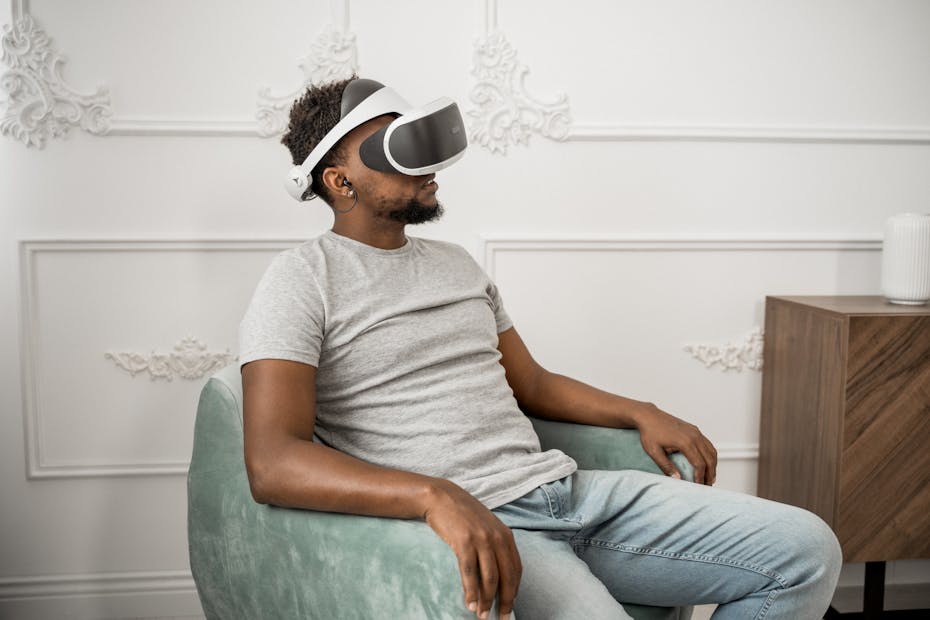Introduction: Exploring the Intersection of AI and Creativity in Interior Design
The symbiosis of artificial intelligence (AI) and creative expression has opened groundbreaking opportunities in the field of interior design. As a transformative tool, AI enhances creative processes by offering advanced solutions to long-standing design challenges. It analyzes vast data sets, identifies trends, and applies them to aesthetic and functional environments in ways previously unimaginable. Through machine learning, AI captures the essence of personalization, tailoring spaces to individual preferences while maintaining design standards. This synergy allows designers to experiment with styles, materials, and layouts with unprecedented efficiency. Such technological advancements redefine what is possible, bridging technical precision with intuitive artistry.
AI-Driven Design Inspirations: Broadening the Creative Horizons
AI tools provide interior designers with a wealth of fresh and diverse ideas by analyzing global trends, historical styles, and cultural influences in real-time. These platforms generate mood boards based on user-defined preferences, offering unique combinations of textures, colors, and layouts that challenge conventional design thinking.
- Access to global aesthetics: AI-driven platforms can draw inspiration from international styles, blending them to create innovative, culturally rich spaces.
- Infinite iterations: Designers can explore countless variations of a concept without manual effort, enabling experimentation with unconventional themes.
- Trend forecasting: AI predicts upcoming design trends, allowing professionals to stay ahead of industry movements.
This rich reservoir of AI-generated inspiration empowers designers to push creative boundaries effortlessly.
Streamlining Mood Board Creation with AI-Powered Tools
AI-powered tools are revolutionizing the way designers create mood boards, enabling faster and more efficient workflows. These tools utilize intelligent algorithms to analyze preferences, styles, and design themes, delivering curated visual inspirations within seconds. Designers can easily input keywords, color schemes, or design elements, and the AI generates comprehensive mood boards tailored to specific projects.
Through machine learning, these tools identify patterns and recommend cohesive combinations of textures, fabrics, and furnishings. This minimizes time spent on manual curation and improves ideation. Moreover, AI tools integrate seamlessly with graphic design software, allowing real-time updates, adjustments, and streamlined collaboration with clients or teams.
Personalized and Adaptive Designs: Tailoring Interiors with AI Insights
AI offers designers the ability to craft interiors that are not only functional but also uniquely personalized. By analyzing individual preferences, lifestyle habits, and even cultural influences, AI identifies patterns and trends that align with a client’s vision. Machine learning systems adapt to user feedback, suggesting furniture arrangements, color palettes, and decor styles that resonate with personal tastes.
AI-powered design tools also enable simulations to visualize how changes in lighting, texture, or spatial layout impact aesthetics and functionality. Tools like generative design algorithms adjust dynamically, ensuring adaptability without compromising creativity. This seamless integration of data and design fosters interiors tailored with precision.

Speeding Up the Creative Process: Leveraging AI for Efficiency
AI is revolutionizing the creative workflow in interior design by automating time-intensive tasks and enabling designers to focus on high-level decision-making. It accelerates idea generation through AI-powered design platforms that provide instant room layouts, color schemes, and furniture suggestions based on client preferences.
AI-driven tools like 3D modeling software streamline revisions, allowing real-time changes without rebuilding models from scratch. Furthermore, machine learning algorithms analyze trends and user feedback, delivering insights that help designers create designs aligned with customer desires. By delegating repetitive tasks to AI, designers can allocate more time to developing unique and inspired concepts for clients.
Exploring Virtual and Augmented Reality for Real-Time Visualization
Virtual Reality (VR) and Augmented Reality (AR) technologies are transforming how interior designers conceptualize and present their ideas. AI-powered VR enables immersive 3D environments where designers can build, explore, and refine spaces without physical constraints. Users can virtually walk through spaces, assess proportions, and visualize materials in lifelike settings.
AR, supported by AI, overlays virtual elements onto real-world settings, allowing clients to see furniture, finishes, or decor directly within their existing spaces. These tools enhance communication between designers and clients, ensuring clearer alignment on design goals. By providing interactive, real-time visualizations, VR and AR elevate creativity and precision in the design process.
Future Implications of AI in Revolutionizing Creative Design Practices
Artificial intelligence is set to redefine creative design practices by pushing the boundaries of innovation and efficiency in interior design. Advancements in AI will enable highly personalized design recommendations through improved data analysis, creating spaces tailored to individual preferences and lifestyles. Emerging technologies like generative AI will allow designers to experiment with endless virtual layouts and materials, optimizing aesthetics and functionality.
AI-powered tools may also facilitate sustainable practices by analyzing eco-friendly materials and energy-efficient configurations. Furthermore, the integration of AI with augmented reality (AR) and virtual reality (VR) could redefine client interactions, offering immersive experiences before finalizing designs.
Conclusion: Embracing AI as a Partner in Innovation and Expression
AI serves as a powerful collaborator, reshaping how interior designers approach creativity and problem-solving. By aiding in tasks like rapid prototyping and material selection, it opens new avenues for innovative designs. AI tools streamline time-consuming processes, allowing designers to focus more on imaginative aspects. The use of algorithms to analyze aesthetic patterns or predict client preferences enhances the precision of tailored solutions. Furthermore, AI fosters dynamic collaboration by providing alternative perspectives and iterations. This partnership ensures designers can push boundaries, blending technology with human artistry to create spaces that are both functional and emotionally resonant.
Finally, for more on INJ Architects:
